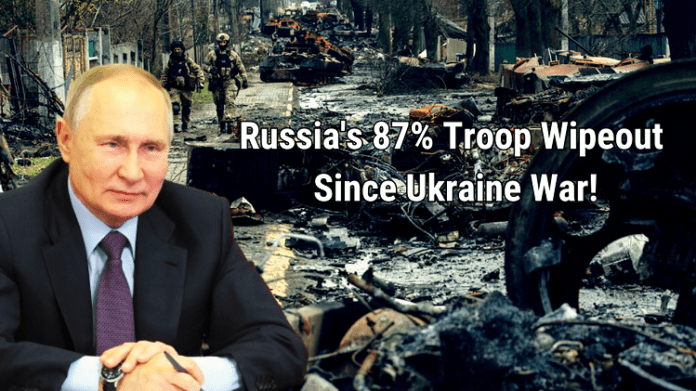| Translate This News In |
|---|
Russia has experienced a staggering 87 percent reduction in its active-duty ground troops since the initiation of the Ukraine invasion, along with a two-thirds decline in pre-invasion tanks, according to a declassified US intelligence assessment shared with Congress, as reported by sources.
Despite substantial losses in both personnel and equipment, Russian President Vladimir Putin remains resolute in advancing the conflict, which is approaching its two-year mark early next year. US officials caution that Ukraine remains highly susceptible to further aggression. A long-anticipated Ukrainian counteroffensive has stalled, and there are concerns that Kyiv may not make significant territorial gains in the coming months.
This intelligence assessment, sent to Capitol Hill, coincides with a push from the Biden administration for additional funding for Ukraine, facing resistance from some Republicans. Ukrainian President Volodymyr Zelensky’s visit to Washington aims to secure essential military and economic aid to bolster Ukraine’s ability to resist Russia.
The report reveals that Russia, despite heavy losses, has sustained its war effort by relaxing recruitment standards and utilizing older Soviet-era equipment. Nonetheless, the assessment emphasizes that the conflict has significantly impeded Russia’s 15-year effort to modernize its ground forces.
Of the 360,000 troops deployed to Ukraine, including contract and conscript personnel, Russia has suffered losses of 315,000 on the battlefield. Additionally, 2,200 out of 3,500 tanks, and 4,400 out of 13,600 infantry fighting vehicles and armored personnel carriers have been destroyed, constituting a 32 percent loss rate.
As of late November, Russia has depleted over a quarter of its pre-invasion stockpiles of ground forces equipment, diminishing the scale and complexity of its offensive operations. Despite ongoing challenges, Russia persists in its military campaign, resorting to alternative recruitment methods and drawing on older equipment from Soviet-era stockpiles.
The political landscape in Washington poses a significant risk to Ukraine, with some Republicans opposing additional funding. Senate Republicans are advocating for inclusion in a broader spending package covering areas such as Israel, Taiwan, and the US southern border. The Biden administration warns that the US is nearing the limit of available funds for Ukraine war.
A National Security Council spokesman indicates that Russia believes a winter military deadlock will diminish Western support for Ukraine, providing Russia with a strategic advantage despite its losses. The Russian military has reportedly suffered over 13,000 casualties along specific axes, along with 220 combat vehicle losses since launching its offensive in October.
Before the invasion, Russia had approximately 900,000 active-duty troops, including various branches. In response to the conflict, Russia announced plans to expand its armed forces to 1.5 million, implementing conscription rounds and extending the age limit for certain categories of citizens.
This significant toll has prompted Russia to adopt extraordinary measures, such as partial mobilization and the recruitment of convicts and older civilians. The war has also set back Russia’s military modernization by 18 years, according to the assessment.
In Washington, Ukrainian President Zelensky seeks critical military and economic aid, emphasizing the urgency of support for Ukraine’s ongoing resistance against Russia.
However, resistance from some Republicans in Congress poses a challenge to securing additional funding. The intelligence report underscores the substantial impact of the conflict on Russia’s military capabilities, emphasizing the need for sustained international support for Ukraine.


















